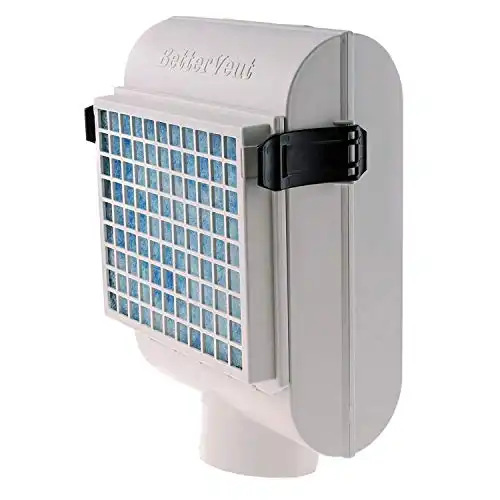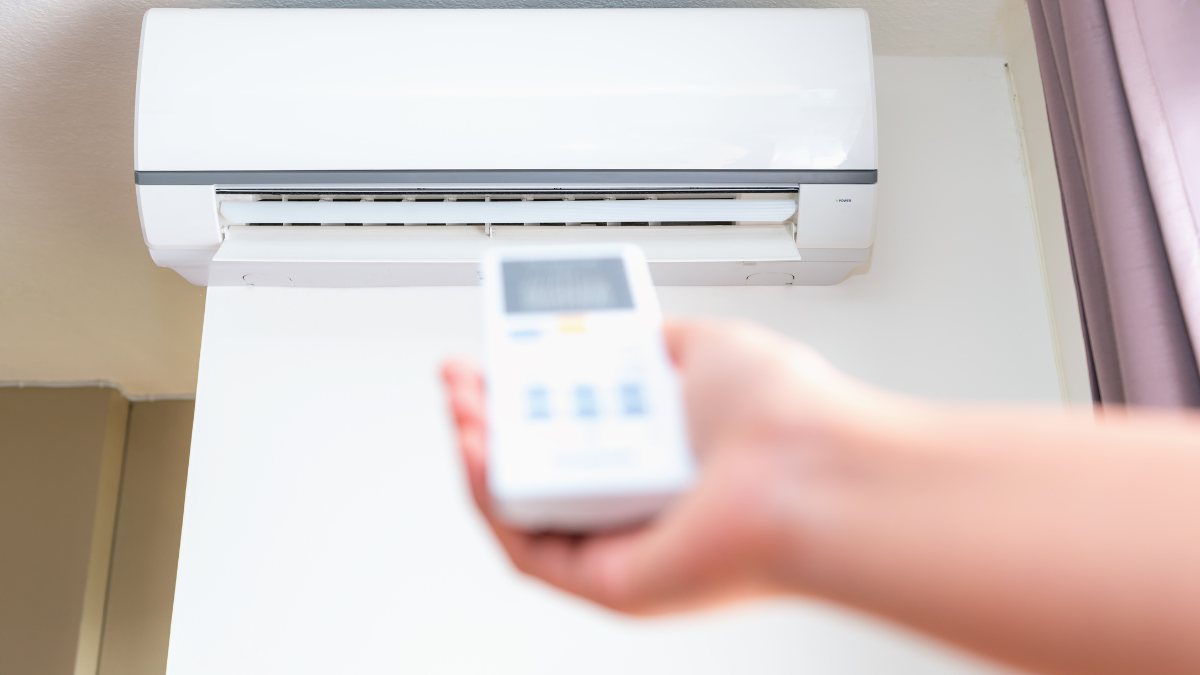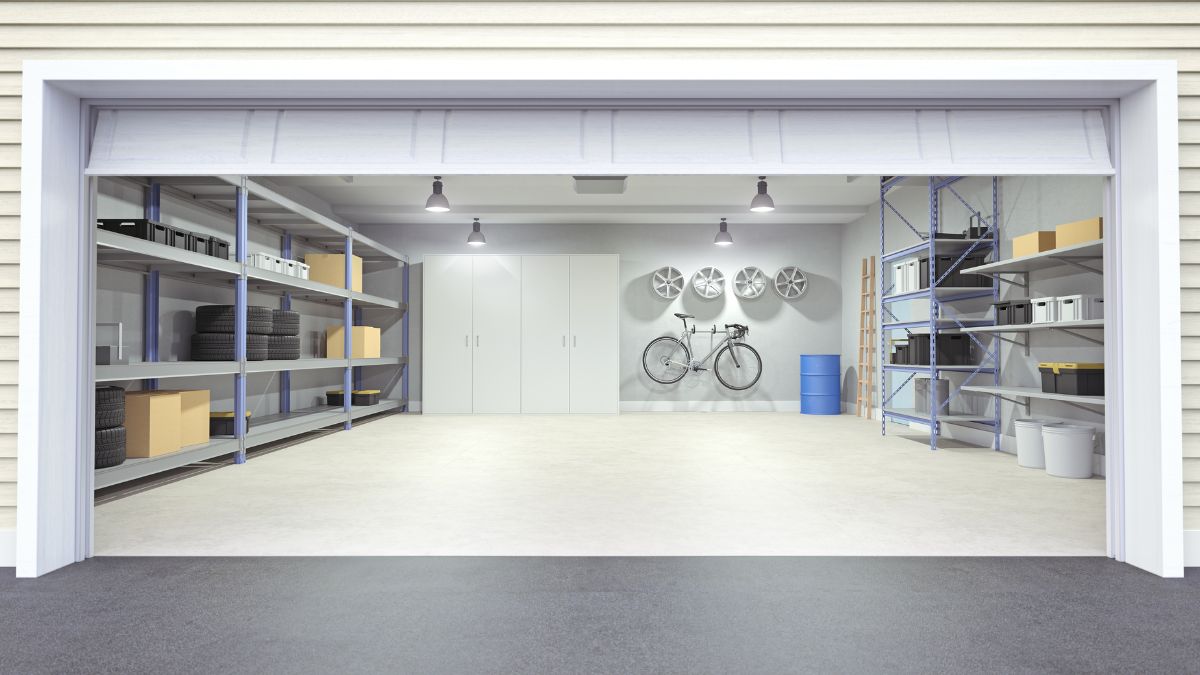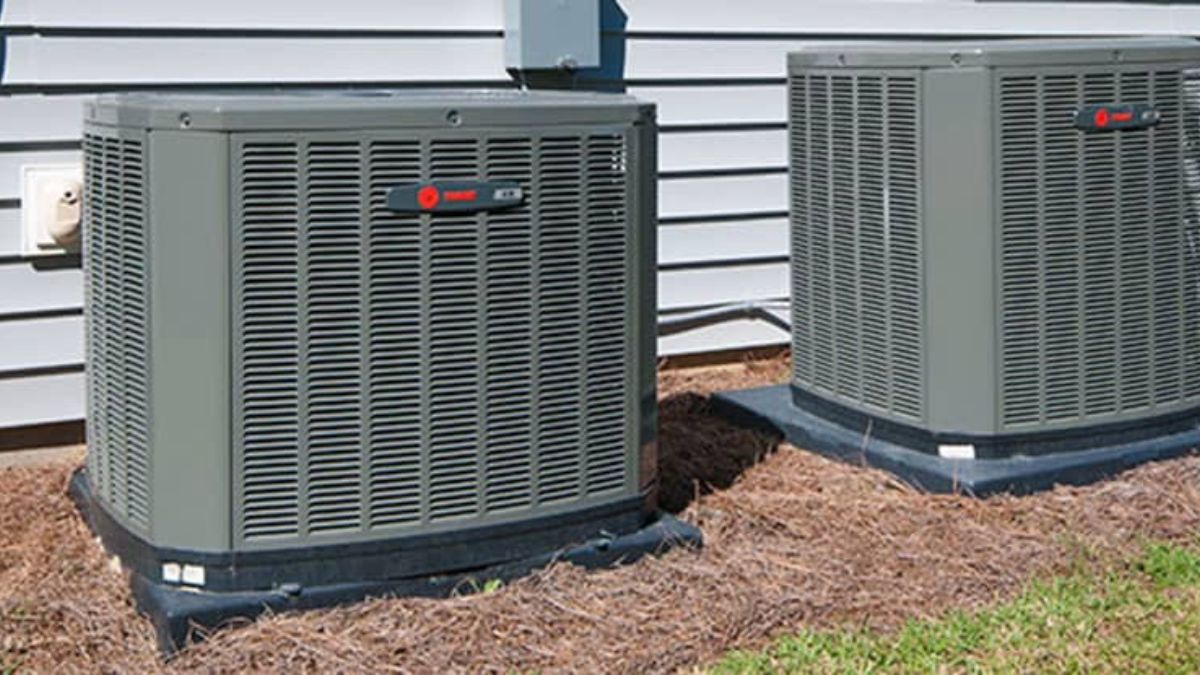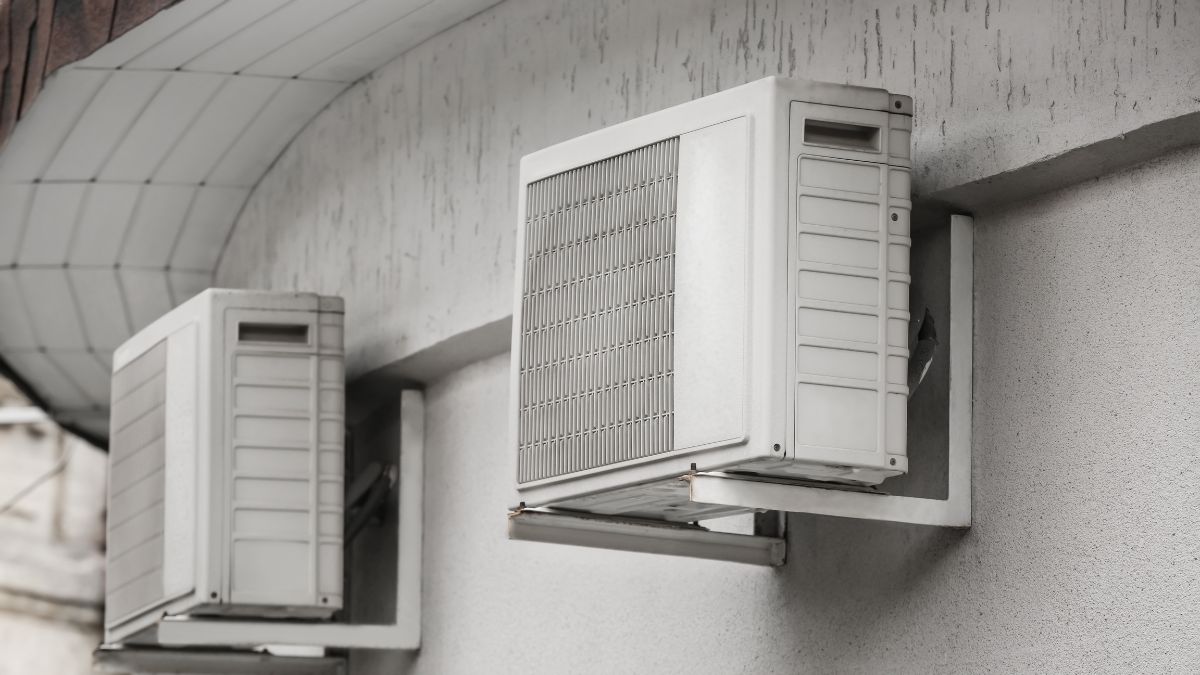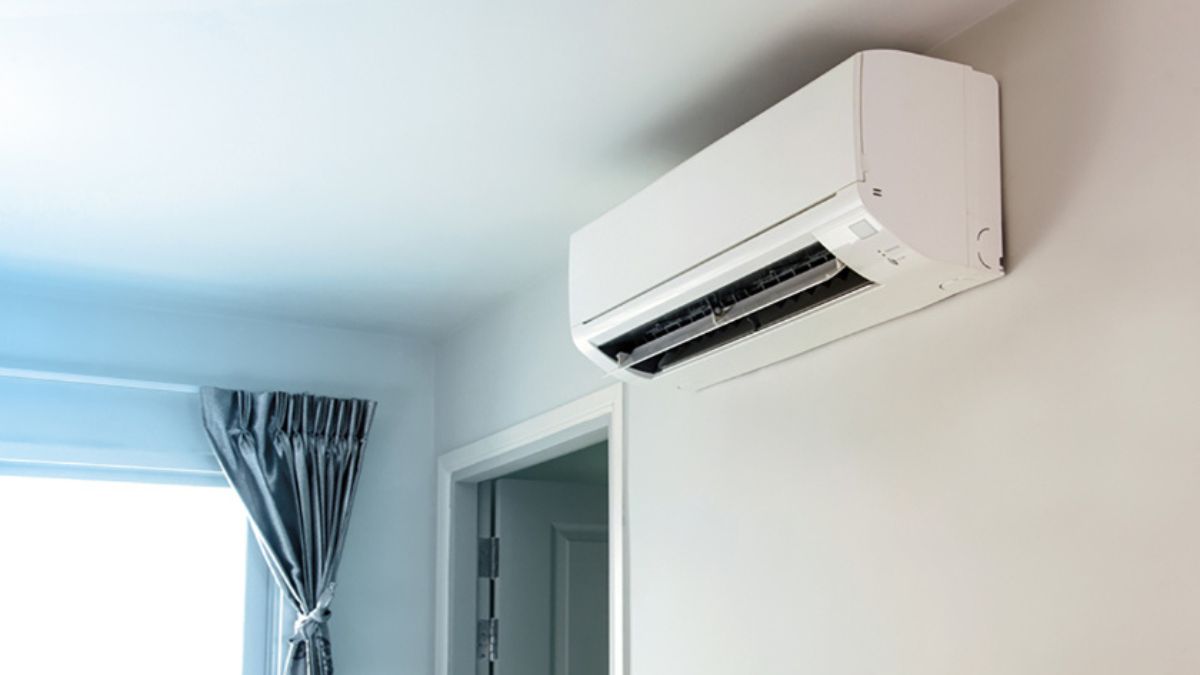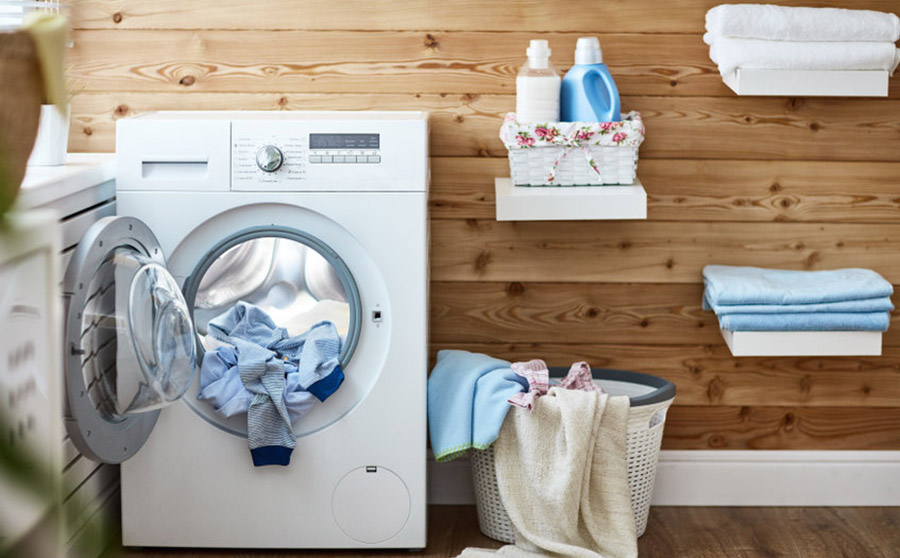
It’s estimated that over 56% of households own dryers. Some are said to dry as many as 9 loads of laundry in a given week. So, it’s critical that dryer venting be safe. The problem arises when a dryer is added where none existed, and there’s no way to vent the dryer. This led to the creation of indoor dryer venting.
According to building codes, dryers are required to vent to the exterior. However, building codes don’t govern existing structures. While indoor dryer vents are sold in stores, most contractors and home inspectors consider them problematic because they do not supply exterior venting for warm, moist air that can cause moisture problems and mold growth.
Traditionally, outdoor dryer vents direct hot dryer exhaust outside through an exterior wall or the roof. However, indoor venting kits were developed for these renters and homeowners in households without direct venting options to the exterior for an electric clothes dryer.
If you have no option for venting your dryer to the exterior, the BetterVent Indoor Dryer Vent is a good option.
Indoor Dryer Vents and Safety
Clothes dryers are powered up by either electricity or gas burners. Because the entire drying process is contained indoors, using electric heating is most recommended over gas.
Exhaust from gas clothes dryers must be vented outside as they contain carbon monoxide, poisonous to humans.
Some people underestimate the importance of a vent in a clothes dryer. Dryer lint is an extremely flammable and can be a fire hazard if not properly maintained.
You might assume that its job is to expel hot air out of the dryer and possibly out of the home, forgetting that along with the heated water vapor, the exhaust duct carries with it highly flammable cloth particles that are mostly made of cotton and polyester.
If not frequently and adequately cleaned, lint could accumulate inside the vent, restricting heat through the vent and causing the dryer to overheat.
Too much heat energy could cause a mechanical malfunction triggering a spark. The lint simultaneously acts up and bursts into flames, causing a massive inferno.
According to the Consumer Product Safety Commission, house fires caused by cloth dryers are more common than people care to admit and are consequently responsible for several injuries, deaths, and substantial property damage.
Indoor Dryer Venting Kits
While an electric dryer doesn’t necessarily require venting to the home’s exterior, proper dryer ventilation helps the appliance be more efficient and helps remove lint and water vapor for proper airflow. Failure to install one will cause the machine to be inefficient, contributing to faster wear and could become a fire hazard.
It’s also not mentioned often, but dryer lint and exhaust can be toxic. Dryer exhaust and lint can contain harmful chemicals and mold spores linked to health problems.
In a Seattle area study, researchers found acetaldehyde emissions from certain laundry detergent brands equal 3 percent of the total acetaldehyde emissions from automobiles.
A Healthline article on dryer sheets cited that the amount of acetaldehyde coming from the dryer vent was also just 3 percent of what’s commonly released from automobiles.
Most indoor dryer vents installments come in kits and are mostly DIY projects. However, as many do not have options and choose to install them on their premises, indoor vents remain a topic full of controversy.
An indoor dryer vent kit can vent an electric clothing dryer when outdoor venting is impossible.
Typically, the kit consists of a lint trap bucket, a 4” thick 5ft long flexible aluminum duct, and a clamp. In this type of system, exhaust from the dryer flows to a bucket full of water to trap the lint (filtration method) then the humid air blows into the laundry room through holes in the bucket lid.
However, the maintenance aspect is largely exhausting to many users because one has to stand on guard and keep changing the water trapping lint in the bucket until the drying cycle is completed.
Aside from physical exhaustion, owning a system that requires frequent replacement filters could make indoor venting more costly at the end of the day.
Best Indoor Dryer Vents
If you must use an indoor dryer vent, the BetterVent Indoor Dryer Vent is considered by many to be the best on the market. Some of the features include:
- Double filter dryer vent. The BetterVent Indoor Dryer Vent captures lint, dust, pet hair, and other debris with the energy-efficient and money-saving BetterVent Dryer Vent. This vent captures the finest dust particles thanks to a stainless steel pre-filter screen and a polyester filter.
- Save time, energy, and money with this long-lasting dryer vent. The double filter system in the BetterVent patented technology has no water requirement, so there are no messy cleanups. By reintroducing heated dryer air into the space, you can save time and money on chilly months by drying clothes faster.
- Safety alert feature. Don’t worry about forgetting to clean the screen or filter. The patented Safety Vent Flap will automatically open to prevent your dryer from overheating until maintenance is done. It will only open when approximately 80% of the airflow is restricted if you’ve calibrated your flap correctly. If your dryer takes longer than usual, it’s time to change the filter.
The International Residential Code
Duct Construction
Duct Length
Duct Termination
Duct Size
Transition Ducts
Duct Installation
Pros and Cons of Indoor Dryer Vent Kits
The indoor dryer vents system does save not meet the above requirements.
But when one lives in a condominium or apartment and does not have the luxury to choose from a better venting system, they do not have an option but to settle for one.
The advantage of the indoor dryer vent, as much as it’s surrounded by controversy, is that it gets the job done.
The challenge is finding a suitable vending kit that will meet your needs.
For you to find the right indoor clothes dryer vent that will work, it is best to consider the following;
- Type of dryer considering its heating system.
- Access to a sink
- Are your washer and dryer stacked up or separate
The three will determine what type of filtration to go. For example, easy access to a sink calls for a water filtration system.
Indoor venting kits are mostly safe when used with electric dryers and never with gas burners.
Examples of suitable recommendable kits that work well by using water to trap lint and generally improving the quality of air in the house are;
- Dundas Jafine’s Proflex Dryer Duct System.
- BetterVent’s Indoor Vent kit. (See Video Below)
As we consider the options of a cloth dryer, we must also admit that there is no appliance without its pros and cons and an indoor dryer vent is no exception.
Let us look into both sides to this type of vent;
Pros
- During the coldest seasons, the hot vapor expelled into the room during the drying process warms up the interior making the cold less bearable. As it warms up your home, the need to turn on the heating system reduces; therefore, your household bills are reduced in a way.
- Generally, venting systems are known to harm the environment through pollution. For example, gas burners can power dryers up, emitting carbon monoxide to the environment. But because indoor dryers only use electricity with very few polluting elements, they become less harmful to the environment.
- It is an expensive modern world we live in, and everyone would welcome the reduction of household expenditure as much as possible. However, most indoor dryer vents are DIY kits made of readily available materials. Therefore, the amount you incur becomes less than the cost of installing an outdoor venting system.
Cons
- Laundry rooms are rather small, and the humid temperatures created could last longer. However, for every load of laundry one dries, up to a gallon full of water goes up in moist vapor; therefore, you risk having a sauna-like environment within your home.
- In the same breath, too much moisture in the air could cause health issues like allergies and asthma. The walls and ceiling will trap the water in the air and create an environment for mold and other microorganisms to become a health hazard. The extra moisture will as well ruin wooden storage cabinets.
- The dryer vent filters are not foolproof and still risk lint accumulating in all the wrong places, amounting to a safety hazard.
- The maintenance part of the kit is quiet on the high as it requires one to manually and frequently change the water in the bucket, which can prove to be tedious.
- The presence of lint is evidence of your clothes wearing off. Therefore, if you choose to air dry your clothes instead of machine drying, you will preserve them and spend less on replacement.
Salvage the situation and create a healthy environment for your family. It is mainly advised that keeping all ventilations like doors and windows open is crucial to help air the room and circulate the humid air during the drying circle.
Better still, one can connect a venting hose pipe to run from the dryer up an open window or door leading to the house’s exterior. But, of course, it is not a permanent solution; therefore not require permanent venting lines.
Note: On regular occasions, make sure to have a filtration method and its replacement on standby. And for you not to run into trouble, first check if your locality regulations on the building code allow dryers to be vented indoors.
Ventless Clothes Dryers: An Alternative to Consider
Dryer Vent Ducting Types
There are five types of dryer vent ducting types.
- Flexible Aluminum Foil Duct
- Semi-Rigid Metal Duct
- Slim Duct
- Rigid Metal Duct
- Plastic or Vinyl Duct
Flexible duct is commonly used among them. But unfortunately, many households are oblivious of the importance cloth dryer vents play in their homes’ safety and lives. Flexible ducts are referred to as transitional ducts and are not supposed to extend beyond eight feet or inside a wall or unconditioned space, like an attic or crawl space.
The best dryer vents are rigid metal ducts and meet building codes.
Aside from removing the hot, moist air from the dryer, the venting systems are meant to safely carry lint past the lint filter and deposit it into the bucket full of water.
For the clothes dryer venting system to work efficiently, it should be cleaned regularly to prevent fires and mold-related problems.
They will even go a long way in terms of wear and tear, and it is solely the owner’s responsibility to make sure that their venting system is constructed from recommended materials and installed per the required code.
In general, a safety inspection officer will only be able to pinpoint issues on the system that need correcting because he will not know the manufacturer’s specific recommendations, the local code requirements, or confirm the dryer vent compliance.
Warning Signs That Your Dryer Venting Needs Cleaning
- The recommended drying time for an average size load of clothes is between 35 to 40 minutes and shouldn’t extend beyond 60 to 75 minutes. If it’s taking longer, your dyer venting may need to be cleaned.
- Vent hood flaps do not open properly. It could be built up of lint clogging up the vent.
- Lint and debris are expected. However, lint and debris accumulate around the dryers’ lint filter over time. You should clean your lint filter each dryer run.
- Another one is that when you start feeling the heat temperatures in the room rise even when the dryer is running, you should be aware that lint build-up might have occurred, interfering with airflow.
Conclusion
Indoor dryers need to be vented to the exterior. If you must use an indoor dryer vent kit, be sure to examine and clean it regularly to prevent moisture and mold problems that will come if neglected. If you’re using an indoor dryer vent on the interior of your home or inside a basement, consider using an indoor dehumidifier.
A dehumidifier will help collect the warm air from the indoor dryer vent exhaust, remove the moisture, and discharge the water into an internal bin or through a drainage tube into a sink.


